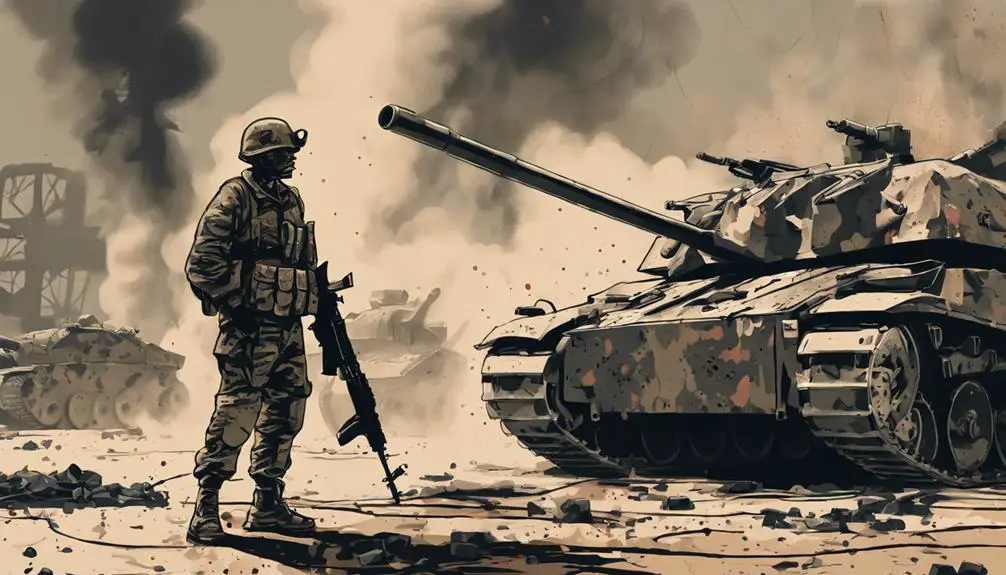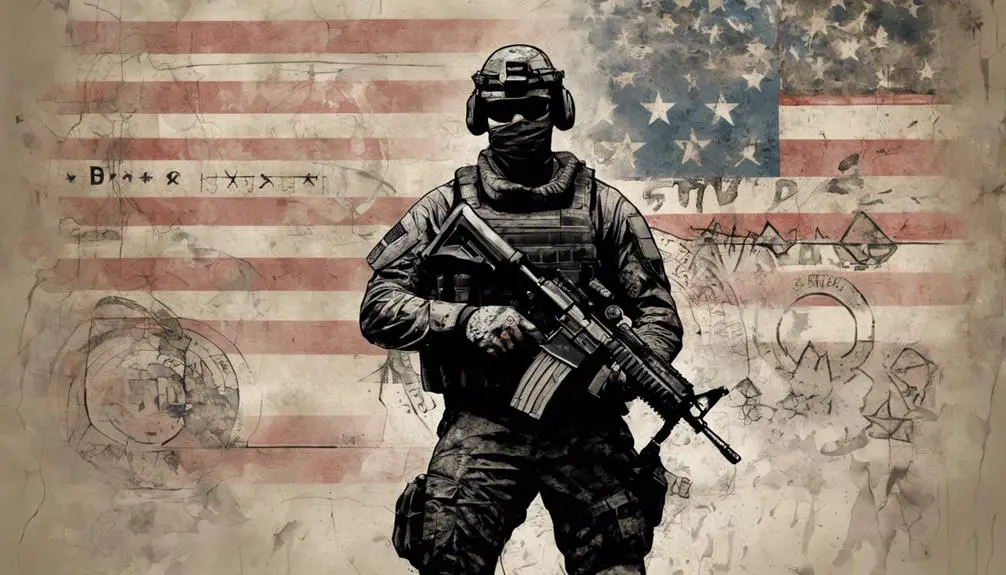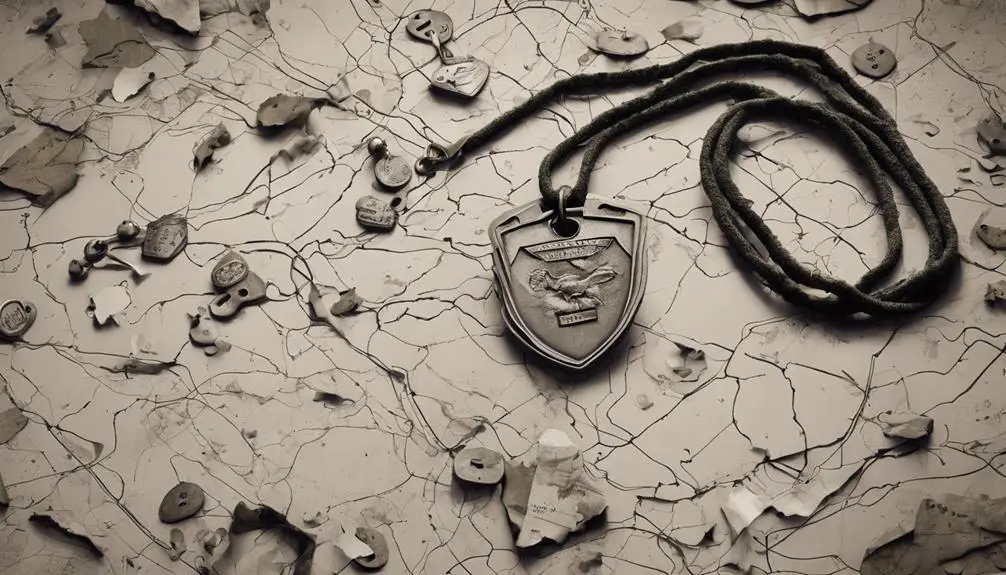You're stepping into the world of battle military slang, where secret communication tactics have been essential for centuries. Military slang has evolved with tactics, technology, and social dynamics, creating a sense of camaraderie among troops. From essential battlefield commands like 'incoming' and 'fall back' to codes and ciphers, every word counts in high-pressure situations. You'll find that mastering military acronyms, gun lingo, and radio communication lingo can be a matter of life and death. As you explore this world, you'll uncover the intricacies of military communication – and the more you explore, the more you'll discover the vital role slang plays in battle culture.
History of Military Slang

You're about to explore the fascinating history of military slang, and it's crucial to understand its evolution. Military slang has its roots in ancient times, with evidence of soldiers using colloquial language to communicate secretly and bond with their comrades-in-arms. This unique language helped soldiers cope with the harsh realities of war and created a sense of camaraderie among troops.
As you investigate the forgotten origins of military slang, you'll discover that it's an integral part of military culture. The evolution of slang is closely tied to the development of military tactics, technology, and social dynamics. You'll find that military slang has been shaped by various factors, including geographical locations, cultural influences, and historical events.
You might be surprised to learn that military slang has been used throughout history, from ancient civilizations to modern-day conflicts. The language has adapted to reflect the changing nature of warfare, incorporating new terminology and phrases to describe cutting-edge technology, tactics, and experiences.
Essential Battlefield Commands
As you shift from understanding the historical context of military slang to its practical applications, you'll find that effective communication is essential on the battlefield, where clear commands can mean the difference between success and failure.
In high-pressure situations, every second counts, and using essential battlefield commands can be a matter of life and death. To maintain order and coordination, you need to be familiar with tactical formations, such as 'wedge' or 'echelon,' which dictate the arrangement of troops on the battlefield.
Critical alerts, like 'incoming' or 'hostile fire,' warn of imminent threats, prompting swift reactions to protect yourself and your unit. When every second counts, clear and concise commands are crucial.
You must be able to issue and respond to commands like 'fall back' or 'flanking maneuver' without hesitation. By mastering essential battlefield commands, you'll be better equipped to navigate the chaos of combat and make quick, informed decisions to ensure your team's success.
Codes and Ciphers Explained

In the heat of battle, secure communication relies on codes and ciphers, sophisticated encryption techniques that safeguard sensitive information from enemy interception.
As you navigate the complexities of military communication, understanding encryption methods is essential. You'll encounter various encryption methods, such as substitution, transposition, and block ciphers, each designed to conceal sensitive information. Cipher breakers, skilled in cryptanalysis, work to decipher these encrypted messages, using techniques like frequency analysis and cryptogram analysis.
To stay one step ahead, militaries employ advanced encryption methods, like public-key cryptography and hash functions. These methods guarantee that even if an enemy intercepts a message, they won't be able to decipher its contents.
You'll also encounter cipher machines, like the Enigma machine, which uses a complex system of rotors and substitution tables to encrypt messages.
As you explore further into the world of codes and ciphers, you'll appreciate the intricate dance between encryption and decryption, where the stakes are high and the margin for error is slim.
Common Military Acronyms
Military personnel rely heavily on acronyms to convey complex information quickly and efficiently, and understanding these abbreviations is essential for effective communication on the battlefield. You might be familiar with some common military acronyms, but do you know their origins and evolution?
Here are a few examples of common military acronyms:
- SITREP: Situation Report, used to provide an update on a situation or mission.
- OPSEC: Operational Security, referring to the process of protecting sensitive information.
- FOB: Forward Operating Base, a temporary or permanent military base.
- MRE: Meal, Ready-to-Eat, a pre-cooked, pre-packaged meal used in the field.
Understanding these acronyms is vital for effective communication, especially in high-stress situations.
The origins of military acronyms can be traced back to World War I, where they were used to shorten complex phrases and convey information quickly. Over time, these abbreviations have evolved to adapt to new technologies and operational environments.
As you continue to explore the world of military slang, keep an eye out for these acronyms and how they're used in different contexts.
Slang for Firepower and Weapons

You'll commonly hear military personnel throwing around slang terms for firepower and weapons, like 'brassing up' or 'laying down suppressive fire,' which reveal their unit's firepower capabilities. These terms, known as Gun Lingo, are an integral part of military communication.
When you hear 'ammo slang' like '7.62' or '5.56,' you'll know they're referring to specific calibers of ammunition. Understanding these terms is essential in high-pressure combat situations. For instance, 'brassing up' means loading a weapon with brass-cased ammunition, while 'laying down suppressive fire' means providing a high volume of firepower to pin down enemy forces.
Military personnel use these terms to convey critical information quickly and efficiently. By mastering Gun Lingo and Ammo Slang, you'll better comprehend the language of warfare and gain insight into the world of military operations.
As you explore further into the world of battle military slang, you'll uncover a complex web of terminology that's vital to military communication.
Radio Communication Lingo
As you tune into radio transmissions, cryptic call signs and code words flood the airwaves, demanding your attention and deciphering skills. In the world of military radio communication, clarity is crucial to successful missions.
To guarantee seamless communication, radio operators adhere to strict Radio Etiquette guidelines. These guidelines dictate protocols for transmission procedures, including call signs, frequency selection, and message formatting.
Here are some essential aspects of Radio Communication Lingo:
- Frequency Hopping: A technique used to minimize interference by rapidly switching between different frequencies.
- Call Signs: Unique identifiers assigned to individuals or units to facilitate communication.
- Clear Text: Uncoded messages transmitted in plain language.
- Authentication Codes: Special codes used to verify the authenticity of transmissions.
Special Ops Jargon Decoded

Your understanding of radio communication lingo is about to get a boost as you step into the domain of Special Ops Jargon Decoded, where cryptic terms and abbreviations conceal critical information. Here, you'll explore the world of Operator Lingo, where brevity and secrecy are paramount. Covert Communication is the name of the game, and you'll need to be fluent in this dialect to stay ahead of the curve.
In this domain, phrases like 'SITREP' (situation report) and 'EOD' (explosive ordnance disposal) become second nature. You'll learn to decipher codes like 'LZ' (landing zone) and 'FOB' (forward operating base). These terms are more than just jargon – they're the difference between life and death in high-stakes operations.
As you navigate this complex web of terminology, you'll discover that each phrase is carefully crafted to convey maximum information in minimal time. This is the language of Special Operations, where precision and clarity are the only currencies that matter.
Frequently Asked Questions
Do Military Personnel Use Slang in Formal Reports and Documents?
You might wonder if military personnel incorporate slang in formal reports and documents. In general, the answer is no. Official language is expected to maintain a formal tone, conveying professionalism and clarity.
You'll rarely find colloquialisms or informal expressions in formal military reports, as they're meant to be concise and unambiguous. Instead, personnel use standardized terminology to guarantee precise communication, adhering to protocol and maintaining a level of decorum in official documentation.
Can Military Slang Be Used in Informal Writing, Like Emails?
As you navigate the uncharted territory of informal writing, you'll find that military slang can be a valuable asset in emails. Like a master painter adding a splash of color to a canvas, you can inject personality into your tone, making it more relatable and conversational.
With language flexibility, you can adapt your tone to suit your audience, and military slang can be a useful tool in striking the right tone, ensuring your message has the desired impact.
Are There Any Military Slang Words Specific to Certain Branches?
As you explore military slang, you'll find that each branch has its unique lingo. The Air Force has its own set of phrases, known as 'Air Force Lingo,' which can be quite different from Navy Jargon.
For instance, the Air Force uses 'Bingo' to indicate low fuel, while the Navy uses 'Bingo' to signal a successful mission. You'll notice that each branch has its distinct terminology, reflecting their specific culture and operational needs.
Can Civilians Use Military Slang in Everyday Conversation?
When using military slang in everyday conversation, you might wonder if it's appropriate.
Cultural appropriation concerns arise when adopting language from a group you're not part of. However, if you're aware of the terms' origins and use them respectfully, it's likely acceptable.
Social norms play a role too; if your social circle is familiar with military slang, using it might be fine.
Just be mindful of your audience and context to avoid coming across as insensitive or pretentious.
Do Military Slang Words Change Over Time Due to Cultural Influence?
As you navigate the landscape of language, you'll notice that words, like rivers, constantly flow and change course. Similarly, slang words, influenced by cultural fusion, evolve over time, adapting to new patterns.
You see, language isn't static; it's a dynamic, living entity. Evolution patterns emerge as cultural influences merge, shaping the lexicon. Military slang is no exception, with words and phrases morphing in response to cultural shifts.
You'll find that military slang, like any language, is in a constant state of flux.
Conclusion
As you decode the dialect of the battlefield, remember that military slang is more than just a language – it's a shield, a sword, and a lifeline.
It's the whispered password that gains you access to a world of brotherhood and sacrifice. It's the cryptic message that saves lives. It's the warrior's dialect, and now, it's yours to wield.







